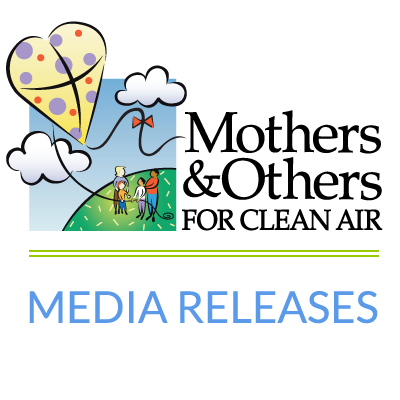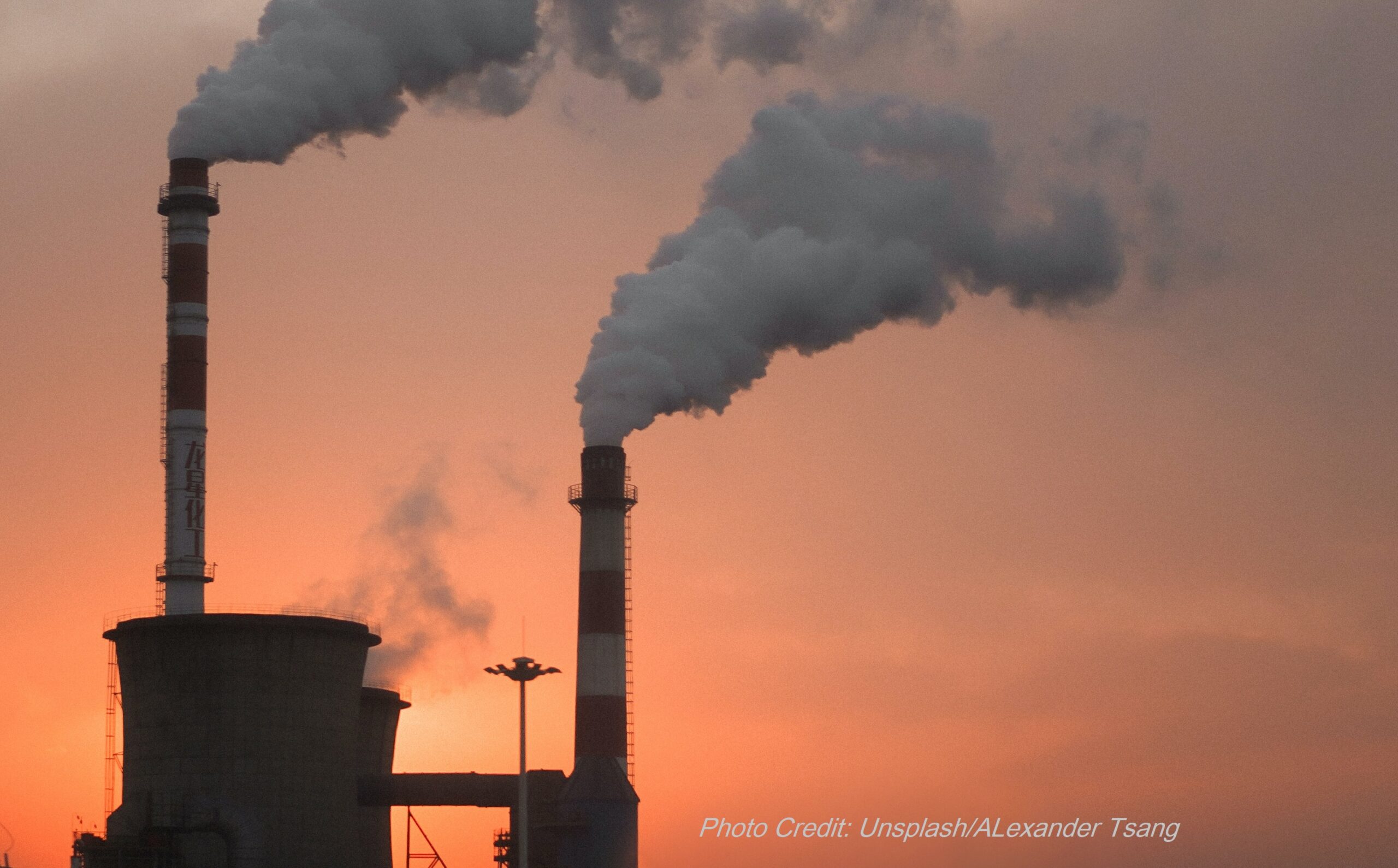Immediate Release: April 30, 2014Contact: Susan Berryman Rodriguez, Mothers & Others for Clean Air – 404.858.3964
Rebecca Cheatham, Medical Advocates for Healthy Air – 704-307-9528
CHARLOTTE, NC [Embargoed Until: 12 a.m. (EST), April 30, 2013]— The American Lung Association’s “State of the Air 2014” report released today shows that the Charlotte metro area continued to show increases in ozone pollution in 2010-2012 over last year’s report. Mecklenburg County, the most polluted county in the metro area, had a weighted average of 13.2 days with unhealthy levels of ozone, slightly higher than the weighted average of 11.2 days in 2009-2011. This is in keeping with a trend seen across the nation in terms of worsening ozone levels. The metro area did improve in year-round levels for particle pollution in 2010-2012 and once again ranked among the cleanest in the nation as having no days with unhealthy spikes in particle levels.
“The air in Charlotte is cleaner than when we started the ‘State of the Air’ report 15 years ago,” said Susan Berryman-Rodriguez, project director for Mothers & Others for Clean Air, a program of the American Lung Association of the Southeast. “In this year’s report the Charlotte metro area had more ozone days than Atlanta, usually the worst in the Southeast. Reducing ozone pollution may be particularly challenging in the future unless steps are taken to reduce carbon pollution. Carbon pollution sets the stage for higher temperatures which can lead to higher ozone levels.
“Charlotte continues to face many challenges in the future in the quest for clean air,” said Rebecca Cheatham, project manager for Medical Advocates for Healthy Air. “As one of the fastest growing cities in the U.S, we must to take action to assure that our air quality doesn’t diminish our enviable quality of life. We need to make smart choices in development, transportation, and energy that ensure a sustainable, healthy region for decades to come.
Ozone develops in the atmosphere from gases that come out of tailpipes, smokestacks and many other sources. When these gases come in contact with sunlight, they react and form ozone smog. Ozone is a lung irritant and can cause wheezing, coughing, asthma attacks and premature death. Those most at risk include people with lung or heart disease, children and teens, the elderly, and people who work or exercise outdoors during periods of high ozone. “We must set stronger health standards for pollutants and clean up sources of pollution in the Charlotte area to protect the health of our citizens,” continued Cheatham.
Overall, “State of the Air 2014” found that nearly half of all Americans – more than 147 million – live in counties in the U.S. where ozone or particle pollutions levels make the air unhealthy to breathe. The 15th annual national report card shows that, while the nation continued to reduce particle pollution — a pollutant recently determined to cause lung cancer — poor air quality remains a significant public health concern.
“State of the Air 2014” also finds that a number of North Carolina counties’ ozone levels worsened resulting in either a D or F grade where the peak levels are monitored.
2013 Report 2014 Report
Davie B D
Guilford D F
Haywood C D
Lincoln D F
Person C D
Rockingham C D
Wake D F
“From our first ‘State of the Air’ report to this most recent one, we have seen that the Clean Air Act delivers significant health benefits,” said Berryman-Rodriguez. “However, the past 15 years have also confirmed that air pollution is a more serious threat to our health than we’d previously known.”
“Congress needs to continue to ensure that the provisions under the Clean Air Act are protected and are enforced. The U.S. Environmental Protection Agency (EPA) and every state must have adequate funding to monitor and protect our citizens from air pollution and new threats caused by increased temperatures.”
The American Lung Association calls for several steps to improve the air everyone breathes:
- Clean up power plants. The EPA needs to reduce carbon pollution. Ozone and particle pollution that blows across state lines must be controlled. In the next year, the Administration has pledged to set standards for carbon pollution from new and existing power plants.
- Strengthen the outdated ozone standards. The EPA needs to set a strong, health-based standard to limit ozone pollution. Strong standards will drive the needed cleanup of ozone across the nation.
- Fund the work to provide healthy air. Congress needs to adequately fund the work of the EPA and the states to monitor and protect the nation from air pollution.
- Protect the Clean Air Act. Congress needs to ensure that the protections under the Clean Air Act remain strong and enforced.
The American Lung Association urges the public to join the fight for clean air and to learn how to protect themselves and their families by visiting www.stateoftheair.org.
Background
The “State of the Air 2014” report uses the most recent quality-assured air pollution data, collected by federal, state and local governments and tribes in 2010, 2011, and 2012. These data come from official monitors for the two most widespread types of pollution, ozone and particle pollution. The report grades counties, ranking cities and counties based on scores calculated by average number of unhealthy days (for ozone and for short-term particle pollution) and by annual averages (for year-round particle pollution).
###
About Mothers & Others for Clean Air
Founded by Laura Turner Seydel and Stephanie Blank in 2004, Mothers & Others for Clean Air is a partnership of leading public health, environmental and child advocacy organization dedicated to improving air quality. A program of the American Lung Association in the Southeast, Mothers & Others for Clean Air educates the public about the negative health effects from air pollution and engages people by promoting individual actions and policy change to improve air quality. To learn more about M&O and to view a complete list of partner organizations, go to www.mothersandothersforcleanair.org.
About the American Lung Association
Now in its second century, the American Lung Association is working to save lives by improving lung health and preventing lung disease. With your generous support, the American Lung Association is “Fighting for Air” through research, education and advocacy. For more information about the American Lung Association or to support the work it does, call 1-800-LUNGUSA (1-800-586-4872) or visit www.lungusa.org.
About Medical Advocates for Healthy Air
Medical Advocates for Healthy Air, an initiative of Clean Air Carolina, is a statewide network of medical and health professionals leading the call for cleaner, healthier air. Working in rural clinics, urban hospitals and medical offices across the state, we see the growing impact that ozone pollution, fine particulates and air toxics have on North Carolinians. We are committed to reducing that impact through advocacy, education and partnerships.





